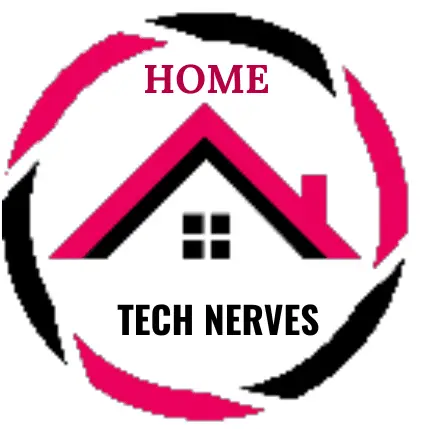As a tech enthusiast with a keen interest in smart home devices, I’ve delved into the fascinating world of AI-driven assistants like Alexa. One burning question that often arises is, “Does Alexa know what room it is in?”
Through my extensive exploration, I’ve come to understand the intricate mechanisms behind Alexa’s spatial awareness capabilities.
By analyzing the underlying technologies such as advanced sensors, machine learning algorithms, and sophisticated data processing, I’ve uncovered how Alexa can grasp its physical surroundings, offering personalized experiences that seamlessly integrate with our daily lives.
Table of Contents
In What All Languages Can You Speak With Alexa?
Amazon’s Alexa was programmed to understand and respond in several languages, including but not limited to English, German, French, Italian, Spanish, Japanese, and Mandarin.
However, it’s essential to check for any recent updates from Amazon or other reliable sources, as the range of languages and dialects that Alexa supports might have expanded since then.
Additionally, the availability of language options can vary depending on the region or country in which you are using the device.
How Does Alexa Know What Room It Is In?
Alexa’s room awareness relies on advanced technologies to discern its location within a home, streamlining user experience and personalized assistance.
Here are a few features:
- Utilize smart sensors: enable Alexa to detect its location within a designated space.
- Implement geolocation services: leverage GPS data to identify the device’s specific room.
- Employ advanced algorithms: interpret audio cues to discern unique environmental characteristics.
- Integrate machine learning: enable Alexa to learn and adapt to room-specific patterns over time.
- Leverage connected devices: utilize IoT integration to facilitate room recognition and personalized responses.
What Is an Alexa Occupancy Routine?
An Alexa occupancy routine is a feature that allows users to automate actions or tasks based on the detection of occupancy in a particular room or area.
This feature leverages compatible smart home devices equipped with motion sensors or other occupancy detection technology.
When the sensors detect movement or occupancy within a defined space, the Alexa routine can be triggered to perform a specific set of actions, such as turning on lights, adjusting the temperature, playing music, or activating other smart home devices.
This functionality enhances the overall convenience and efficiency of managing various tasks within a smart home environment.
How to Set Up Alexa Motion Detection Routine?
Setting up an Alexa motion detection routine can transform your smart home into a more responsive and automated environment.
With the right steps, you can create a system that adapts to your presence, making your daily tasks more convenient.
Steps to Set Up Alexa Motion Detection Routine:
- Open the Alexa app: Launch the Alexa app on your mobile device, ensuring you’re signed in to your Amazon account.
- Tap on “Routines”: In the app, navigate to the “Routines” section, where you can create and manage your routines.
- Create a new routine: Select “Create Routine” to begin setting up a new routine.
- Add a trigger: Under “When this happens,” choose “Voice” and then select “Someone enters or exits” from the available options.
- Configure the motion sensor: Connect and configure your motion sensor-enabled smart device, and choose the specific room or area you want to monitor for motion.

How to Fix the Alexa Occupancy Routine Not Working?
Experiencing issues with your Alexa occupancy routine not functioning can be a frustrating setback in your smart home automation.
With a few simple troubleshooting steps, you can quickly identify and resolve the problem, ensuring a seamless and efficient operation of your smart home devices.
Steps to Fix Alexa Occupancy Routine Not Working:
- Check device connectivity: Verify that all the devices involved in the routine, including motion sensors and smart home gadgets, are properly connected to your network.
- Review routine settings: Double-check the routine configuration in the Alexa app to ensure the triggers, actions, and conditions are accurately set.
- Examine motion sensor placement: Adjust the positioning of the motion sensor to ensure it detects movements within the intended area.
- Restart devices: Power cycle the devices associated with the routine, including the Alexa-enabled device and any connected smart home devices.
- Update software and firmware: Ensure that all devices involved have the latest software updates and firmware versions installed to guarantee optimal performance.
How Does Alexa Detect Presence?
Understanding how Alexa detects presence is crucial in comprehending the underlying mechanisms that drive its occupancy-related functionalities.
By employing a combination of advanced sensors and cutting-edge technology, Alexa can discern the presence of individuals within its operational vicinity, facilitating a more personalized and seamless user experience.
Ways How Alexa Detects Presence:
- Motion sensors: Alexa utilizes motion sensors in conjunction with compatible smart home devices to detect movement within a designated space.
- Wi-Fi network activity: Alexa can infer the presence of individuals based on the connectivity and activity patterns of their Wi-Fi-enabled devices within the home network.
- Voice recognition: Through voice recognition technology, Alexa can identify specific users and tailor responses or actions based on their voice profiles.
- Connected device interactions: Alexa can detect presence through interactions with various connected devices, such as smart lights, thermostats, and other IoT gadgets.
- Ambient sound analysis: By analyzing ambient sounds in their surroundings, Alexa can gauge the presence of individuals and respond accordingly to specific auditory cues.
Does Alexa Have a Motion Sensor?
Alexa, the virtual assistant developed by Amazon, does not have a built-in motion sensor itself. However, it can work in conjunction with compatible smart home devices that have motion sensors, such as smart cameras, motion detectors, and other connected gadgets.
These devices can communicate with Alexa to enable various functionalities, such as triggering routines, automating tasks, or enhancing the overall smart home experience based on the detected motion.
How Do I Turn on Person Detection Notifications on Alexa?
Enabling person detection notifications on Alexa can significantly enhance the security and monitoring capabilities of your smart home.
By following a few simple steps, you can ensure that you receive timely alerts and updates regarding any person detected by your compatible smart home devices.
Steps to Turn On Person Detection Notifications on Alexa:
- Open the Alexa app: Launch the Alexa app on your mobile device and ensure you are signed in to your Amazon account.
- Access device settings: Navigate to the settings for the specific smart home device equipped with person detection capabilities.
- Enable person detection notifications: Within the device settings, locate the option to enable person detection notifications and toggle it on.
- Customize notification preferences: Adjust the notification settings to specify the type of alerts you wish to receive for person detection events.
- Test the notification system: Verify the functionality by testing the person detection notifications through simulated activities or by referring to the device’s user manual for additional troubleshooting steps.
Wrap Up
In my exploration of Alexa’s spatial awareness capabilities, it has become clear that while Alexa doesn’t possess innate room awareness, it can leverage various technologies to discern its physical environment.
By understanding the intricacies of how Alexa processes data from sensors and integrates with smart home devices, it’s evident that it can adapt to different rooms.
With its ability to personalize experiences and streamline daily tasks, Alexa continues to redefine convenience and efficiency within the realm of smart home technology.
Frequently Asked Questions
Can Alexa recognize which room it’s in?
Yes, with the help of compatible smart home devices like Echo Flex or Echo Dot with Clock, Alexa can utilize location awareness features. By assigning devices to specific rooms within the Alexa app, it can tailor responses and actions accordingly.
How does Alexa determine its location within a room?
Alexa determines its location within a room by utilizing device-specific location settings configured in the Alexa app. These settings allow users to assign devices to specific rooms, enabling Alexa to tailor responses and control devices based on their designated locations.
Can Alexa differentiate between rooms without manual setup?
No, Alexa requires manual setup within the Alexa app to differentiate between rooms accurately. Users must assign devices to specific rooms within the app to enable location-based features and ensure Alexa recognizes its surroundings correctly.
What benefits come from Alexa recognizing its location within a room?
By recognizing its location within a room, Alexa can provide more relevant responses and control smart home devices more effectively. This allows for customized experiences, such as adjusting lights or playing music in specific rooms based on user commands.
References:
Amazon. How Do Alexa Occupancy Routines Work? https://www.amazon.com/gp/help/customer/display.html?nodeId=GCDDK2AGHRZS6N5X


